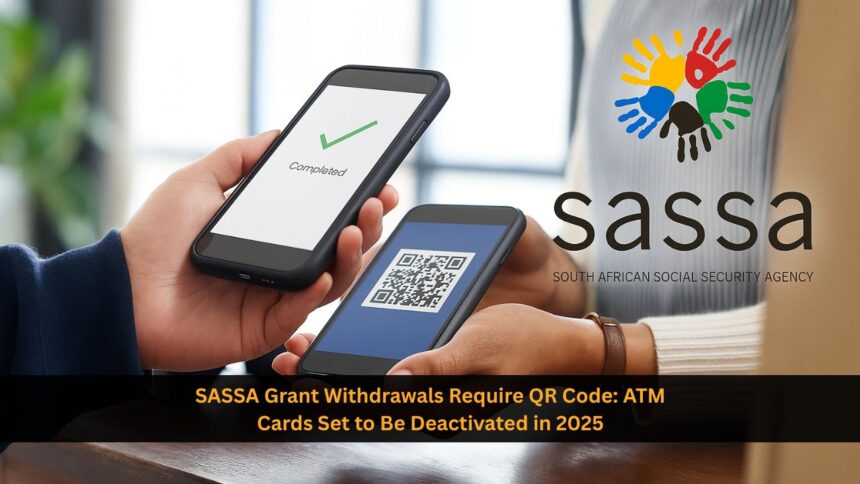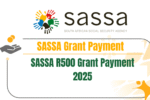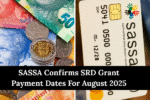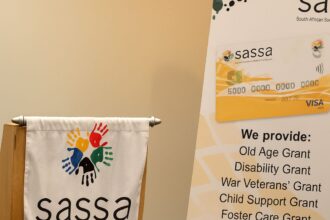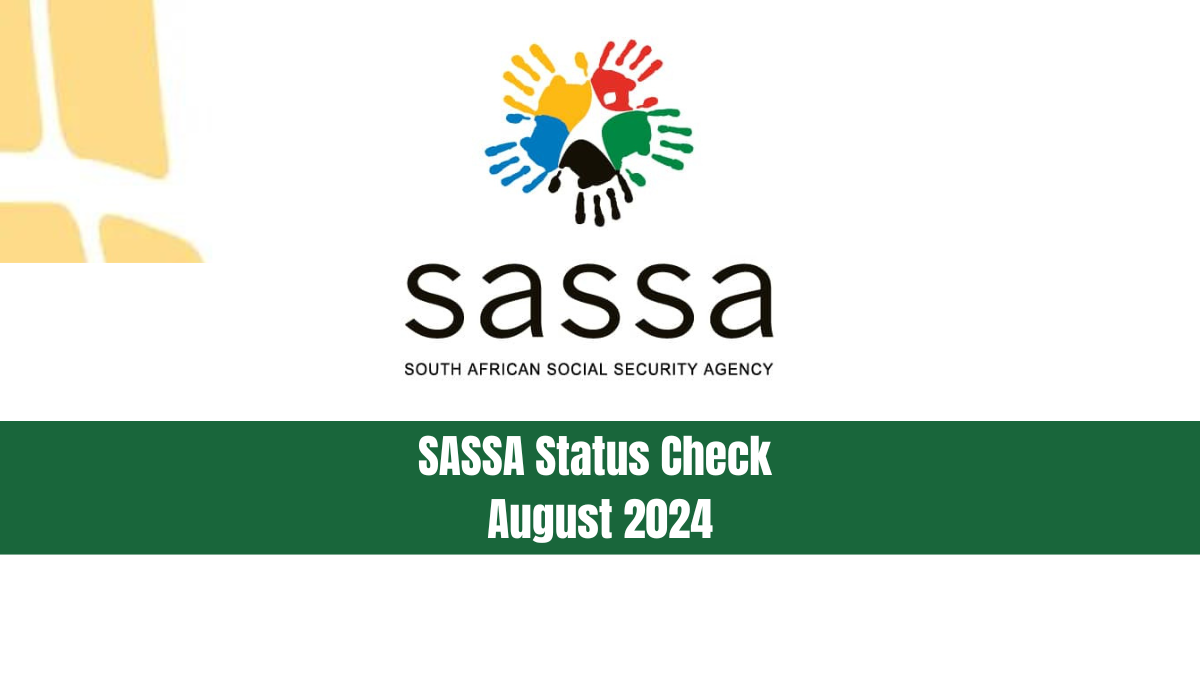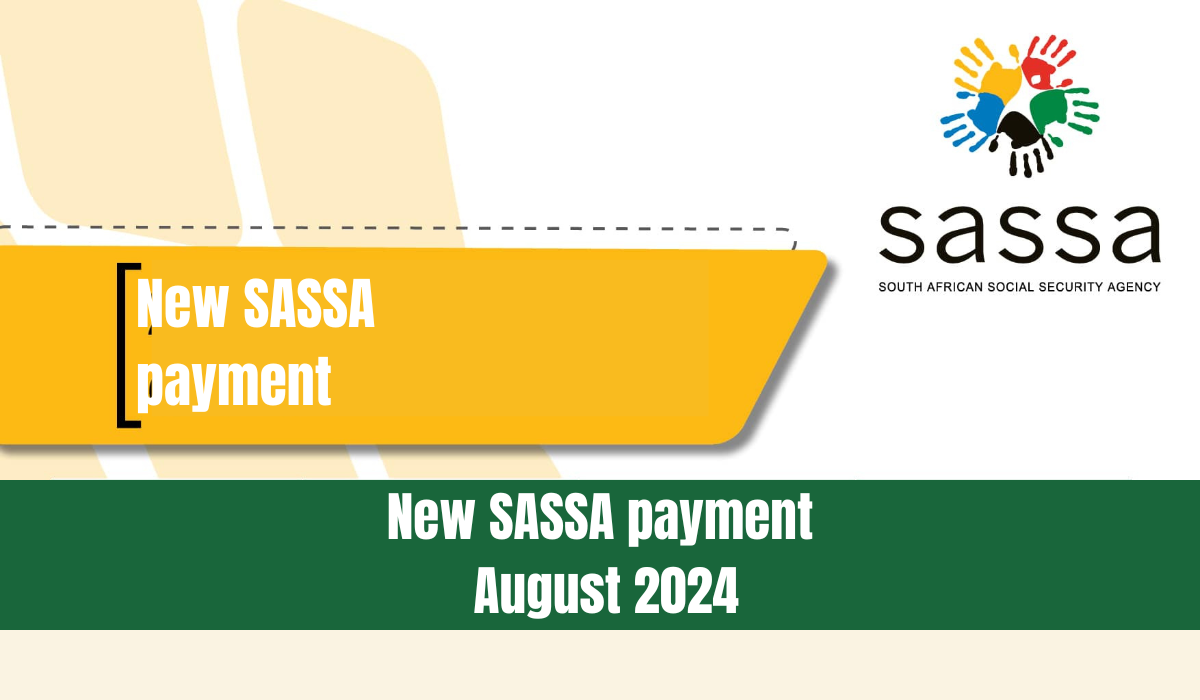SASSA Grant Withdrawals Require QR Code: ATM Cards Set to Be Deactivated in 2025. In a landmark move to modernize the grant distribution system, the South African Social Security Agency (SASSA) is introducing a major technological update: QR code-based withdrawals. This shift will phase out traditional ATM cards, which are scheduled for deactivation in the coming months. The transition is part of a broader national strategy to enhance security, increase efficiency, and combat fraudulent activities linked to social grant payments.
This article explores everything South African beneficiaries need to know about this change, including the benefits, implementation timeline, training support, and a detailed step-by-step process for using the new QR code system.
Why SASSA Grant Withdrawals Now Require a QR Code
The move to QR code withdrawals is driven by SASSA’s commitment to strengthening security and improving service delivery. With ATM cards increasingly vulnerable to cloning, card skimming, and unauthorised transactions, QR codes present a more secure and modern solution. Each transaction will now require a unique QR code generated via the official SASSA mobile application, ensuring that only the rightful beneficiary can access their funds.
Advantages of the QR Code System:
- Enhanced Security: Eliminates risks associated with card cloning and skimming.
- Real-Time Tracking: All transactions can be verified instantly through the app.
- Greater Accessibility: Works through mobile phones, reducing dependency on physical bank infrastructure.
- Cost-Effective: Reduces administrative costs related to ATM card production and logistics.
- Fraud Prevention: Minimises human error and system loopholes vulnerable to exploitation.
- Modernization: Aligns South Africa with global digital payment systems.
How to Transition from ATM Cards to QR Code Withdrawals
SASSA has laid out a clear process to ensure that the transition is smooth for all beneficiaries. Users will be required to download the SASSA mobile app, register their details, and generate a QR code every time they need to withdraw funds.
Step-by-Step Guide to Use SASSA QR Code Withdrawals
| Step | Action | Details |
|---|---|---|
| 1 | Download the SASSA App | Available on both Android and iOS app stores |
| 2 | Register Your Grant Details | Enter your personal and grant details for verification |
| 3 | Generate Your QR Code | Create a unique code for every withdrawal transaction |
| 4 | Visit a Participating Merchant | Present the QR code to an approved merchant for scanning |
| 5 | Receive Your Grant Instantly | Funds are transferred directly to your digital wallet/bank |
What This Means for SASSA Grant Recipients
The impact of QR code implementation on SASSA grant recipients is expected to be profound. While some may find the shift challenging initially, particularly elderly or digitally illiterate beneficiaries—the long-term benefits far outweigh the temporary inconveniences.
Key Impacts on Beneficiaries:
- Initial Learning Curve: Older or rural populations may struggle initially with smartphone use.
- Training and Support: Community centers and NGOs will provide in-person workshops.
- Increased Financial Inclusion: Even remote users will benefit from faster access to funds.
- Government Assurance: SASSA promises full assistance during and after the transition.
- Boosted Economic Efficiency: The state will reduce costs while improving fraud detection.
- Social Empowerment: Encourages beneficiaries to become part of the growing digital economy.
QR Code Withdrawal Rollout Timeline
To avoid disruption, SASSA is rolling out the new withdrawal system in structured phases. This allows for pilot testing, system tweaks, and user education before a full-scale launch.
Timeline for QR Code Implementation:
- Phase 1: Pilot programs in selected urban areas to test functionality and resolve issues.
- Phase 2: Expansion to semi-urban and rural regions based on pilot results and feedback.
- Phase 3: Nationwide rollout, expected to be completed by the end of the current year.
- Phase 4: Ongoing support, system upgrades, and training to ensure continued efficiency.
Benefits of QR Code Withdrawals for South Africans
SASSA’s switch to QR codes is more than a security enhancement; it’s a step toward a more inclusive, eco-friendly, and digitally driven South Africa. By eliminating the need for plastic ATM cards, the system also contributes to environmental sustainability.
Summary of QR Code Benefits:
- Security – Reduces chances of fraud through unique, one-time-use codes.
- Convenience – No need to carry physical cards; everything is on your mobile device.
- Inclusivity – Ensures better financial access for people in remote or underbanked areas.
- Sustainability – Cuts down on plastic waste from outdated ATM cards.
- Innovation – Supports South Africa’s transition into a digitally powered welfare system.
- Efficiency – Speeds up the grant disbursement process and ensures accurate record-keeping.
Training and Support for a Smooth Transition
Recognising that not all beneficiaries are digitally literate, SASSA has partnered with various community organisations, NGOs, and training centers to provide in-depth guidance. These training programs include practical sessions on how to:
- Download and navigate the SASSA mobile app
- Register a user profile and verify grant eligibility
- Generate and use the QR code for secure transactions
- Report any errors or issues using SASSA’s dedicated support hotline
SASSA is also developing online video tutorials, infographics, and FAQ pages to cater to beneficiaries who prefer digital learning.
Conclusion
The introduction of QR code-based withdrawals by SASSA marks a bold step forward in transforming South Africa’s social grant payment system. While the phase-out of traditional ATM cards might be met with resistance in the early stages, the long-term gains in security, cost savings, and operational efficiency make this transition a worthwhile investment in the country’s future.

